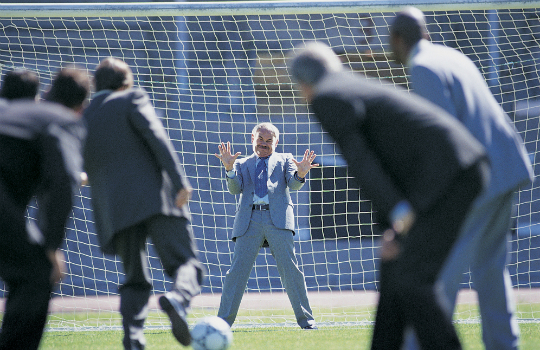Within any organisation, the secret to improving performance and efficiency is teamwork. Nathan Angus explains how team building can be used to create stronger, more effective teams that improve the productivity of an organisation.
Team building is an essential part of any organisational development strategy; an ongoing process that requires continued evolution in order to improve performance and productivity. Over time, teams naturally progress through several stages of development and in the absence of strategic management, team change can have a negative impact on performance in terms of output, morale and even staff turnover. Team building can play a valuable role in guiding teams through such times but there are a number of key considerations that need to be made to ensure success.
It’s vital to clearly define your objectives before embarking on any team building program. Your choice of activities should be guided by this decision to ensure that you achieve your goals, so consider whether your aim is to develop a new team, integrate new members into an existing team, develop specific skills or reward your staff and boost morale. In terms of organisational development, you should also reflect on your long-term objectives such as changing behaviours or adjusting the priorities of your team. Be sure to share your objectives with the team, encouraging them to take ownership and renew their commitment to the team’s success.
Although team building can, and should, be used at any stage of team development to help shape individual behaviours and group dynamics, it is perhaps most often used when a team is first formed or when new members join. Fun activities such as Crystal Maze or Multi Activity Days are a great way to break the ice and help members feel more comfortable with each other. Meanwhile, more structured activities, such as Masterpiece Challenge or Chain Reaction, provide the team with an opportunity to understand each other’s strengths, weaknesses and preferred ways of working. It can also be beneficial to involve managers in the activities, providing them with an opportunity to better understand the individuals within their team.
"...be sure to create a balance of fun, teamwork and learning opportunities that bring your team together and provides everyone with the opportunity to get involved"
It’s vital to ensure that every member of your team remains engaged in the activity, so it is important to consider individual personalities before the fun actually begins. For example, an evening event is a great way to allow employees to blow off steam whilst bonding over good food, drink and entertainment. However, not everyone will feel comfortable if alcohol is involved so you must be careful not to alienate these individuals; you might consider including fun games that everyone can get involved. Whatever the activity you choose, remember this is a team building exercise so be sure to create a balance of fun, teamwork and learning opportunities that bring your team together and provides everyone with the opportunity to get involved.
Realistically, your choice of activities also has to be guided by the resources you have available. It’s important to consider your budget at the outset and also decide how much time your team has available for team building activities. Whilst some organisations allocate regular slots for team building, for smaller businesses this may not be feasible. Nevertheless, it’s possible to achieve results in just a couple of hours as long as you are focused on what you want to achieve. Even if you choose a short activity, we recommend continuing with team building exercises on a regular basis, perhaps every month or two, as you are more likely to see long term results.
For long-term impact, it’s also important to apply the learning and development that has occurred during team building into the workplace. This process should start during the team building event itself, by making employees aware of your objectives and explaining how you expect the activities to benefit them in their day-to-day role, whether that be through new skills they have acquired or better working relationships with each other. You should also follow up the event when staff are back in their normal working environment by asking for feedback and planning future events to build on the progress you’ve made and help the team to adapt as the needs of the organisation change.
The benefits of team building are multi-faceted but, as we have seen, success relies upon careful planning and a commitment, amongst both managers and employees, to ongoing development.
Nathan Angus is operations director at Demon Wheelers. Demon Wheelers is a leading UK events management company, providing team building, corporate events and themed evenings to clients as diverse as United Biscuits, KP Snacks, William Hill and Statoil.








